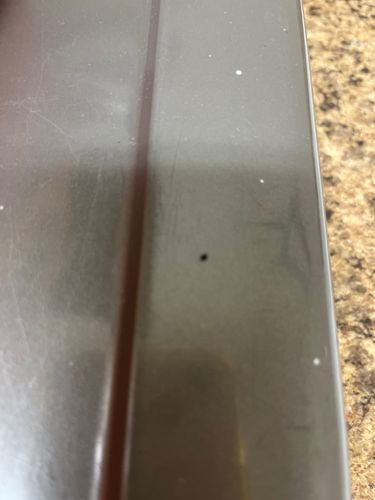Fungus Gnat
Scientific Name: Various genera including Bradysia or Orfelia
Order & Family: Order Diptera, Family Sciaridae or Mycetophilidae
Size: Typically 2-8 mm (0.08-0.31 inches) in length, often appearing as tiny black flies, with the ones in the image appearing at the smaller end of this range.

Natural Habitat
Commonly found in damp, humid environments, especially indoors near potted plants with consistently moist soil, overwatered gardens, or areas with water leaks and decaying organic material.
Diet & Feeding
Larvae feed on fungi, decaying organic matter in soil, and sometimes plant roots. Adults do not feed significantly and are primarily focused on reproduction.
Behavior Patterns
Fungus gnats are attracted to moist environments and decaying organic matter. They are weak fliers and often seen near potted plants, windows, or sinks. Adults typically live for about 7-10 days, during which females lay up to 200 eggs in moist soil. The larvae feed on fungi and decaying organic matter, and sometimes on plant roots. Their life cycle from egg to adult is usually around 3-4 weeks.
Risks & Benefits
Potential risks include being a nuisance pest indoors. While adult fungus gnats are harmless to humans, their larvae can damage plant roots, especially in seedlings and young plants, leading to wilting, stunted growth, and yellowing leaves. Benefits are minimal but they can contribute to decomposition of organic matter in outdoor environments.
Identified on: 8/11/2025